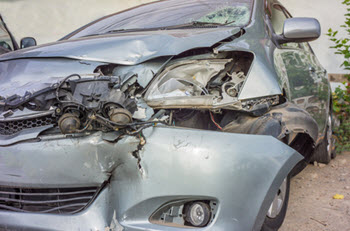Every year, car crashes seriously injure or disable over two million Americans. Nearly all of these incidents trigger some kind of legal proceeding. Contrary to the message in TV ads, the insurance company is not “on your side” in these proceedings. In fact, their lawyers use every means at their disposal to reduce or deny compensation to victims.
In a serious injury crash, that compensation includes money for economic losses, such as medical bills, and noneconomic losses, such as pain and suffering. Additional punitive damages may be available as well, in some cases.
What are some legal loopholes that clever insurance company lawyers try to use in Florida vehicle collision cases?
Contributory Negligence
Comparative fault is one of the most common insurance company defenses in both car accident cases and other kinds of cases. For example, the insurance company might admit that its insured person was speeding. But, the lawyer may insist that the victim’s sudden lane change really caused the crash.
In situations like this, the Florida judge must first determine there is enough evidence to present the matter to the jury. Next, based on that same evidence, the jury must apportion fault between the victim and tortfeasor (negligent driver). That division must be a percentage, like 60/40 or 50/50.
Florida is a pure comparative fault state. The judge divides damages based solely on the percentage of fault. So, even if the victim was 90 percent responsible for the crash, according to the jury, the victim still receives a proportionate share of damages.
Sudden Emergency
Insurance company lawyers often raise this defense in auto-pedestrian accident cases. Typically, the lawyer says something like the victim “darted out” into traffic. That analysis sets up the sudden emergency defense. This doctrine relieves the tortfeasor of liability if:
- Sudden Emergency: This phrase has a specific legal meaning. Drivers should fairly anticipate some unusual events, like a jaywalking pedestrian or a stalled car. These things are not “sudden emergencies.” This label is reserved for once-in-a-blue-moon events like a defective tire blow-out or a sudden hood fly-up.
- Reasonable Reaction: Once the sudden emergency occurs, the tortfeasor must react reasonably. That usually means pulling over to the right. If the tortfeasor panics and drives erratically, the defense does not apply.
Sudden emergency is an affirmative defense. So, the insurance company has the burden of proof on both these points.
Last Clear Chance
Sudden emergency’s legal cousin is the last clear chance rule. It often applies in rear-end and head-on crash situations. It specifically applies if the victim had an opportunity to avoid the crash, perhaps by changing lanes, yet did not do so. In that case, the tortfeasor is not liable for damages.
The victim must have an actual chance to avoid the crash and not a theoretical chance. To return to the lane-change example, it’s not always possible to perform such a maneuver because of things like traffic or weather. In other words, there is a difference between the last clear chance and any possible chance.
Contact Tenacious Attorneys
The insurance company will do what it takes to reduce or deny compensation in a car crash case. For a free consultation with an experienced personal injury lawyer in Brandon, contact Reed & Reed. We have four area offices (St. Petersburg, Lakeland, Tampa, and Clearwater).
Resource:
asirt.org/initiatives/informing-road-users/road-safety-facts/road-crash-statistics

